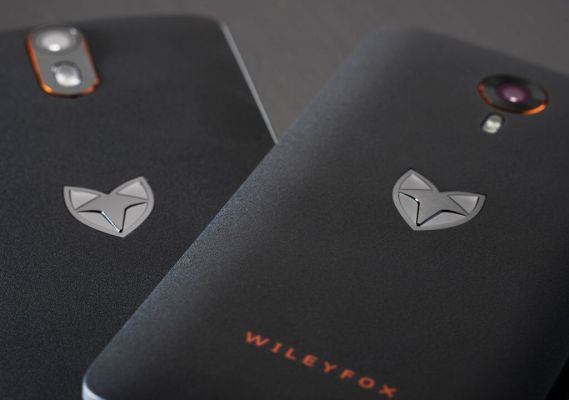The Cyanogen flavor of open Android, which is pushing a more customizable version of Google’s mobile OS — helped along by some $115 million in funding in its coffers, including an $80 million round back in March — has landed on two new smartphones heading for Europe, the Middle East and Africa.
The handsets, which run v12.1 of Cyanogen, are made by a new, U.K.-based entrant into the smartphone making space, called Wileyfox, albeit the phones themselves are actually made in China — so as with other such online retail Android reseller efforts it’s mostly an exercise in branding, with a few customer service flourishes thrown on top to try to stand out (such as European-based call centers for after sales services, and a replacement screen service for a yearly fee).
Does the Western world need more Android phones? According to analyst Gartner, growth in the global smartphone market slowed in Q2 to its slowest rate since 2013. Meanwhile Android’s year-over-year growth was the lowest ever — as the dominant smartphone OS looks to have achieved its peak (with a global marketshare of around 82 per cent). So there wouldn’t appear to be a pressing consumer need for more new Android phones.
But if you are going to try and grab Android users in a hyper saturated smartphone market then offering competitively priced hardware with a software twist is the way to do it — and that’s what Wileyfox is aiming to do, going up against the likes of the OnePlus in Europe.
The 4G/LTE 5.5in full HD display Wileyfox Storm is priced at £199/€249, and has a Qualcomm Snapdragon 615 octa-core chipset, 3GB of RAM, 32GB ROM (user expandable), a 20MP rear lens and an 8MP front-facing lens, plus a 2,500mAh battery (non-removable). While the £129/€169 4G/LTE Wileyfox Swift has a 5in HD display, a Qualcomm Snapdragon 410 quad-core chipset, 2GB of RAM, 16GB ROM (user expandable), and a 13MP rear lens plus 5MP front facing camera. Both devices ship with all the usual Google Android services preloaded, including the Play Store.
As mobile users have become more tech savvy, and smartphones themselves have generally become more consistent in terms of UI experience, the opportunity for online-only phone brands to poach users — especially brands building on an established and familiar platform like Android — is arguably expanding, threatening the retail advantage of an Android giant like Samsung whose incentivized deals with carriers helped get its handsets into phone buyers’ hands for years via their network of retail shops.
And as (or if) more phone buyers feel comfortable buying online, brands like Wileyfox are waiting to woo them with affordably priced hardware — taking a leaf out of the Xiaomi smartphone upstart playbook. Whether they can convince people they need to replace their existing handset a bit quicker than they otherwise would remains to be seen. The core quality of modern smartphones is arguably putting the biggest breaks on market growth. An annual upgrade is certainly far less necessary than it was several years ago, with performance improvements now typically incremental.
As for Cyanogen, its financial backers include Chinese manufacturing giant Foxconn, which makes money by making more hardware. While earlier this year Cyanogen also bagged a partnership with mobile chipset maker Qualcomm, the latter also clearly hoping to eke more growth out of the Android mobile growth engine by supporting another flavor of the OS. These very large mobile industry entities are clearly incentivized to milk more money out of the Android cash cow — hence their support for Cyanogen’s alt Android approach, which is a bet that offering added customization to users also offers a way to grow Android usage in a more mature and confident (but saturated) mobile market.
Here’s how Wileyfox’s European CEO, Nick Muir, set out the company pitch in a statement today: “Our target customer values choice, security and reassurance. These savvy individuals do not want their data made available beyond their control. They want to be able to change the appearance of their screen, beyond just the wallpaper and lock-screen. They want efficient, personalised shortcuts and gestures. They want friendly, helpful 24/7 customer service. And above all they want great quality, premium handsets with the latest technology. Responsive, well-built, reliable, quick-charging handsets with great battery life. And that’s what Wileyfox is all about.”
Whether a user of Google’s services can really expect to have ‘control over the availability of their data’ is another question — but one which Wileyfox’s “savvy” customers aren’t, apparently, asking.
